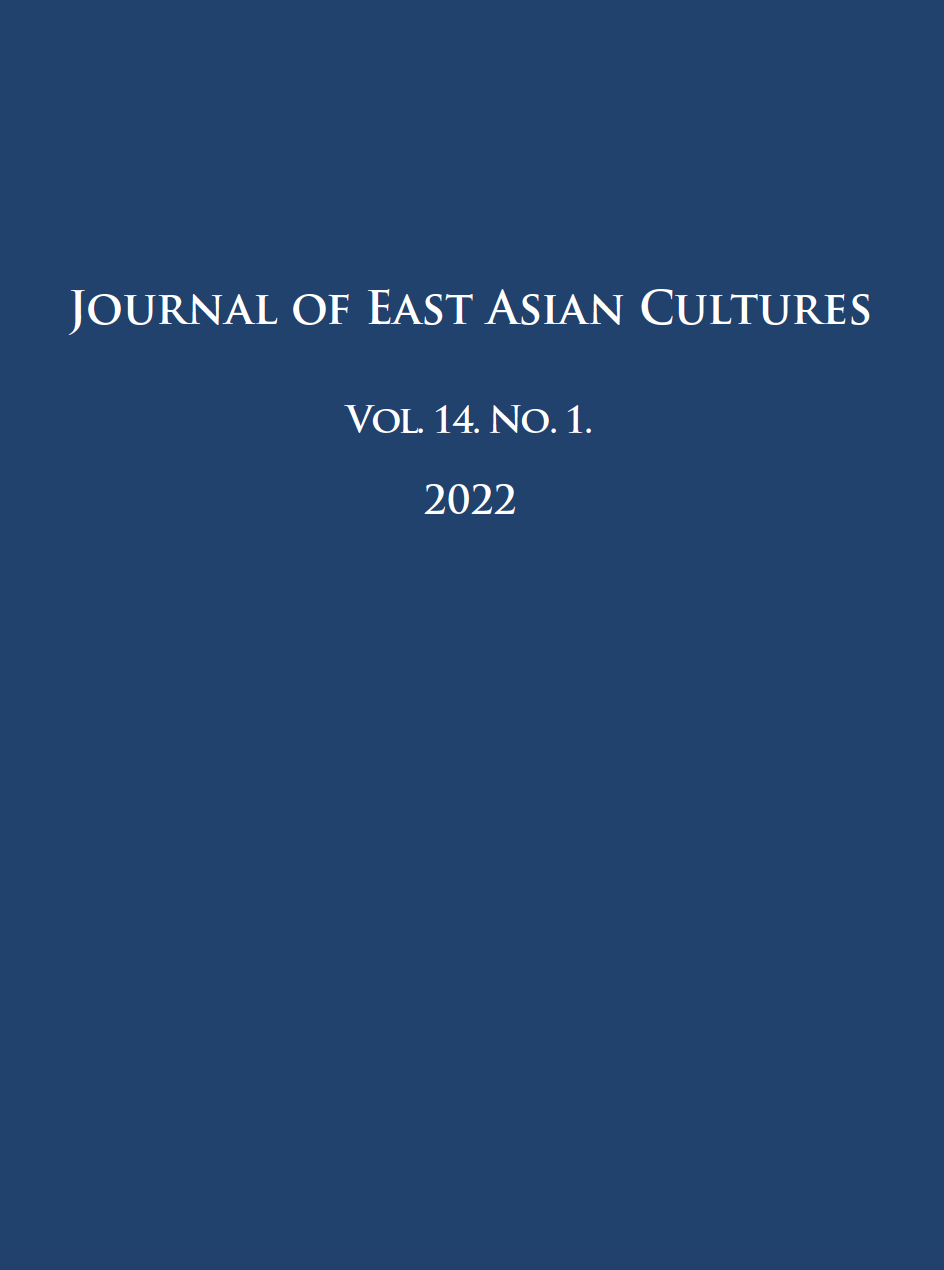Megjelent 2022-11-22
Kulcsszavak
- japán pénz,
- japán érme,
- japán érmetörténet,
- japán történelem,
- japán kultúra
- japán ókor,
- Asuka-kor,
- Nara-kor,
- Heian-kor,
- érmetörténet,
- japán kultúrtörténet ...Tovább
Hogyan kell idézni
Copyright (c) 2022 Marianna Lázár

This work is licensed under a Creative Commons Attribution-NonCommercial 4.0 International License.
Absztrakt
A japán pénz története több mint ezer éves múltra tekint vissza, fejlődését pedig sok ország befolyásolta, leginkább Kína. E tanulmány Japán ókori pénzérméinek eredetét, kialakítási formájuk és mintájuk jellegzetességét és a korabeli kultúrában betöltött szerepét kívánja bemutatni, kis kitekintéssel a mintául szolgáló antik kínai érmékre is. Az első japán pénzérméket (Mumon Ginsen, Fuhonsen, Vadō Kaichin stb.) az i. sz. 7. századtól készítették, a korabeli meghatározó kínai pénzöntési hagyomány hatására. A leghíresebb pénzöntő műhelyek az ókori fővárosok területén (a mai Kansai régióban) működtek, a pénzöntéssel kapcsolatos intézkedésekről pedig történelmi krónikák (Nihon Shoki, Shoku Nihongi) számolnak be. Írott források és régészeti ásatási eredmények bemutatása által a tanulmányban részletes elemzésre kerül minden jelenleg ismert érme, amely a 7. és 10. század között forgalomban (vagy valamilyen formájú használatban) volt a szigetországban.
Hivatkozások
- Nihongi – Chronicles of Japan from the Earliest Times to A.D. 697. W.G. Aston (trans.) 1990. (Ninth printing). Rutland – Vermont – Tokyo: Tuttle Publishing.
- Nihon Shoki Vol. 5. 日本書紀〈5〉. Sakamoto, Tarō 坂本太郎 et al. (ed.) 1995. Tokyo: Iwanami Shoten.
- Shoku Nihongi 続日本書紀 (Japanese Historical Text Initiative, University of California at Berkeley) https://jhti.berkeley.edu/index.html (last accessed: 2022. 03. 31.)
- Asuka Shiryōkan (ed.) 2000. Asukaike Iseki (Asuka Shiryōkan zuroku Vol. 36.) 飛鳥池遺跡 (飛鳥資料館 図録第36冊 ) Asuka: Nara Bunkazai Kenkyūjo Asuka Shiryōkan.
- Delmer, M. Brown (ed.) 1993. The Cambridge History of Japan, Vol. 1: Ancient Japan. Cambridge: Cambridge University Press. https://doi.org/10.1017/CHOL9780521223522.003
- Dolce, Lucia (ed.) 2006. “The Worship of Celestial Bodies in Japan: Politics, Rituals and Icons.” In: The Worship of Stars in Japanese Religious Practice. Culture and Cosmos: A Journal of the History of Astrology and Cultural Astronomy, Vol. 10. Nos 1–2. Cardiff– London: University of Wales and SOAS University of London, 3–43. https://doi.org/10.46472/CC.01210.0203
- Farris, William Wayne 1998. “Trade, Money, and Merchants in Nara Japan.” Monumenta Nipponica 53.3: 303–334. https://doi.org/10.2307/2385718
- Fujii, Kazutsugu 藤井一二 2010. Tenpyō no Bokkai kōryū – Mō hitotsu no kentōshi 天平の渤海交流 -もうひとつの遣唐使 [ Cultural exchanges with Balhae in the Tenpyō era – Another Japanese envoy to Tang Dynasty China]. Tokyo: Hanawa Shobo.
- Hartill, David 2005. Cast Chinese Coins. Manchester: Trafford Publishing.
- Major, John 1993. Heaven and Earth in Early Han Thought: Chapters Three, Four, and Five of the Huainanzi (Suny Series in Chinese Philosophy and Culture). New York: State University of New York Press.
- Matsumura, Keiji 松村恵司2004. Nihon shoki kahei kenkyūshi-ryaku – Wadō Kaichin to Fuhonsen, Mumon Ginsen no hyōka wo megutte 日本初期貨幣研究史略 ―和同開珎と富本銭・無文銀銭の評価をめぐって― [A brief review of the research history on early Japanese currency: examining the value of Wadō Kaichin, Fuhonsen and Mumon Ginsen coins] Tokyo: Institute for monetary and economic studies, Bank of Japan.
- Matsumura, Keiji 松村恵司; Tsugiyama, Jun次山淳 2011. “Nihon shoki kaheishi no saikōchiku 日本初期貨幣史の再構築 [Reconstructing the history of ancient Japanese currency].” In: Nara Bunkazai Kenkyūjo (ed.) Kagaku Kenkyūhi hojokin kenkyū seika hōkokusho, Kiso kenkyū (B) 科学研究費補助金研究成果報告書、基盤研究B. [Grant-in-Aid for Scientific Research: a report and a brief outline of the study, Part B] Nara: Nara Bunkazai Kenkyūjo, 1–4.
- Mikami, Yoshitaka – Batts, Joshua 2017. Coins and commerce in classical Japan. In: Karl F. Friday (ed.) Routledge Handbook of Premodern Japanese History. London: Routledge. 353–363. https://doi.org/10.4324/9781315170473-23
- Nagato, Mitsuo 長戸満男2007. “Mumon Ginsen Shiron 無文銀銭試論 [An essay on Mumon Ginsen coins].” In Kyōto-shi Maizō Bunkazai Kenkyūjo 財団法人京都市埋蔵文化財研究所 (ed.) Kenkyū Kiyō Vol. 10. 研究紀要第10号. Kyōto: Kyōto-shi Maizō Bunkazai Kenkyūjo, 95–182.
- Ooms, Herman 2008. Imperial Politics and Symbolics in Ancient Japan: The Tenmu Dynasty, 650-800. Honolulu: University of Hawaii Press. https://doi.org/10.21313/hawaii/9780824832353.001.0001
- Sakuraki, Shin’ichi 2009. “New Developments in Japanese Numismatic History.” In: M. Amandry et al. (eds) A Survey of Numismatic Research 2002–2007. (Special Publication 15.) Glasgow: International Numismatic Commission and International Association of Professional Numismatists: 578–581.
- Smith, Jonathan 2015. „The Pleiades retrieved – A Chinese asterism's journey to Japan.” In: Richey L. Jeffrey (ed.) Daoism in Japan: Chinese traditions and their influence on Japanese religious culture. London: Routledge.
- Takata, Kanta高田貫太 et al. 2008. Fujiwara-gū Daigokuden-in Nanmon no chōsa (Asuka Fujiwara dai 148 ji chōsa) 藤原宮大極殿院南門の調査(飛鳥藤原第148次調査) [Excavation at the Southern Gate part of the Fujiwara Palace Audience Hall site (Excavation of the Asuka Fujiwara site, Vol 148.)] In: Nara Bunkazai Kenkyujo Kiyō. 奈良文化財研究所紀要 [ Bulletin of the Nara National Research Institute for Cultural Properties]. Nara: Nara Bunkazai Kenkyūjo, 58–69.
- Takagi, Hisashi 高木久史2016. Tsūka no Nihonshi 通貨の日本史 [History of the Japanese currency]. Tokyo: Chūōkōron Shinsha.
- Takeuchi, Ryō 竹内亮2021. “Nana-Hachi seiki no kahei chūzō kikan 七∼八世紀の貨幣鋳造機関 [The coin producing system in 7-8th century Japan].” In: Manyō Bunka-kan (ed.) Manyō Kodaigaku Kenkyū Nenpō No.19. 万葉古代学研究年報19. [Journal of the Manyō Museum, No. 19.] Nara: Manyō Bunka-kan, 11–20.
- Wilhelm, Richard – Baynes, Cary (trans.) 1977. The I Ching or Book of Changes (3rd edition). Princeton: Princeton University Press.
- Yoshida, Takashi 吉田孝 1983. “Ritsuryō-jidai no kōeki 律令時代の交易 [Trade in the Ritsuryō period].” In Ritsuryō kokka to kodai no shakai 律令国家と古代社会 [Ritsuryō State and the ancient Japanese society]. Tokyo: Iwanami Shoten, 289–347.
- Yoshihara, Kei 吉原啓 2020. “Tenmu, Jitō, Monmu tennō no fuhonsen hakkō 天武・持統・文武天皇の富本銭発行 [Issuing Fuhonsen coins by Emperor Tenmu, Empress Jitō and Emperor Monmu ]. In: Manyō Bunka-kan (ed.) Manyō Kodaigaku Kenkyū Nenpō No.18. 万葉古代学研究年報18. Nara, Manyō Bunka-kan, 33–52.
- Yakushiji Official site https://yakushiji.or.jp/column/20220221 (last accessed: 2022. 03. 31.).

